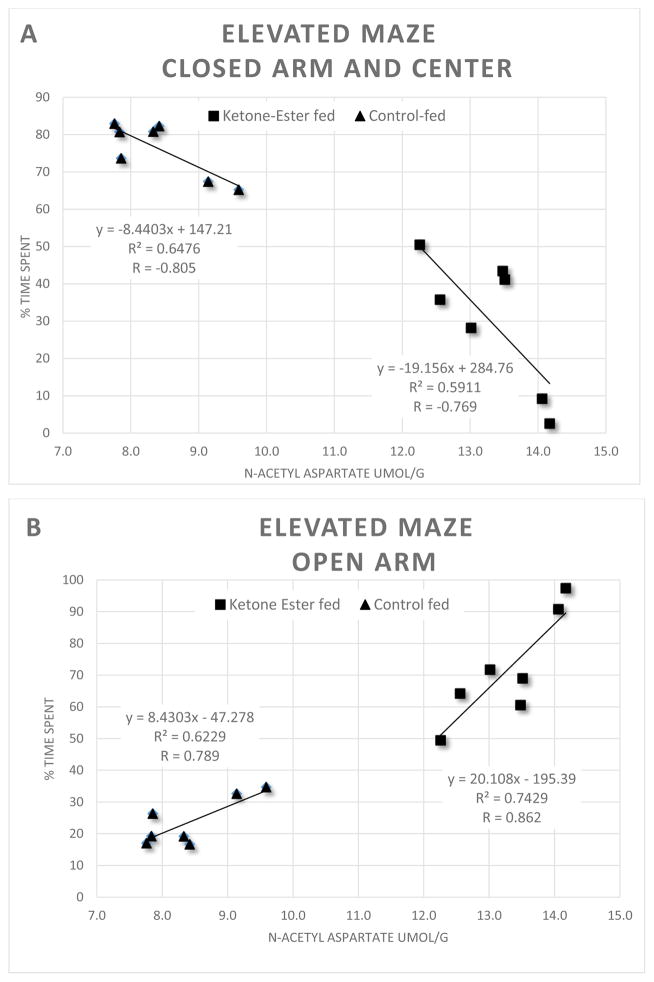Figure 3.
Linear correlation diagrams that depict a relationship between hippocampal n-acetyl aspartate (NAA) from 3xTgAD mice that were maintained on either a ketone ester diet (n=7) or control diet (n=7) versus the percent time spent that each animal remained in either the closed arm and center (A) or the open arm (B) areas of an elevated (60 cm from floor) plus sign-shaped platform maze from phase I trials (Kashiwaya et al., 2013). There were strong correlations between the concentrations of hippocampal NAA and the percent time that animals spent in either areas of the maze. Control diet-fed mice had lower concentrations of hippocampal NAA and remained for a greater percentage of time in the closed arms whereas mice fed the ketone-ester diet preferred the open area portions of the maze.

